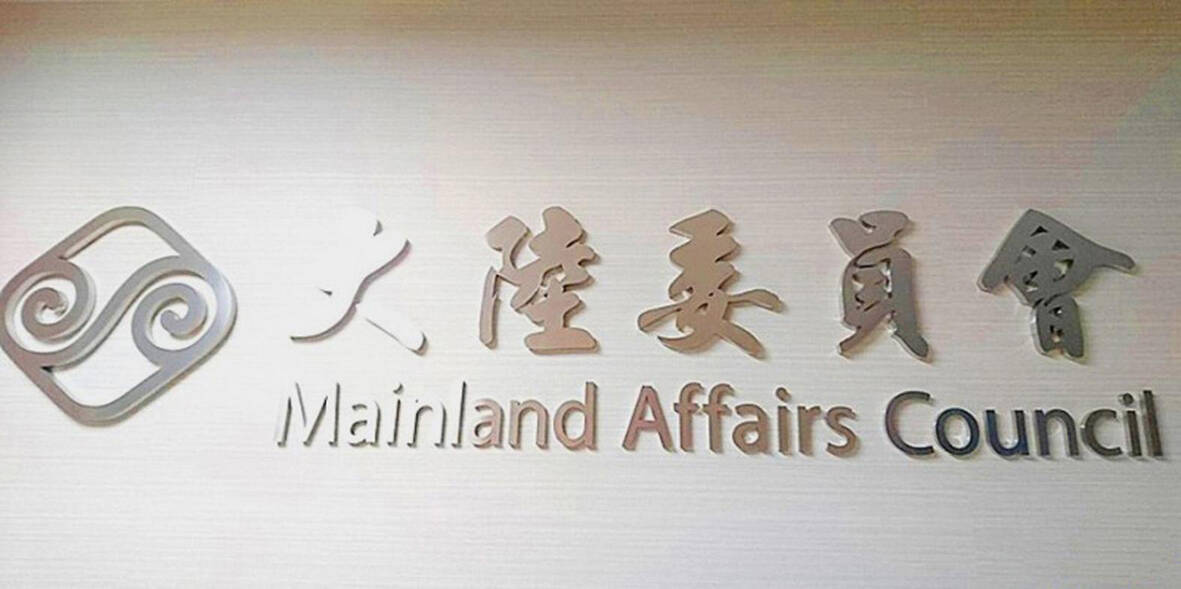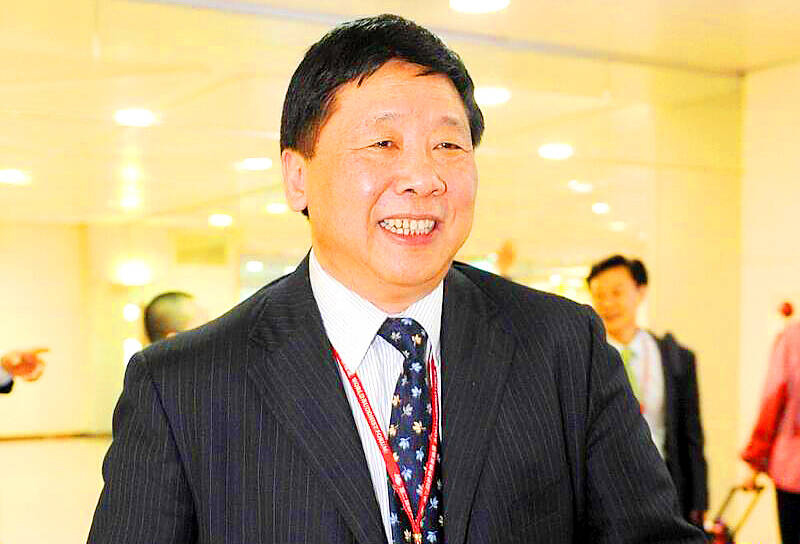China is exploiting the passing of Buddhist master Hsing Yun (星雲) for political purposes, the Mainland Affairs Council (MAC) said yesterday, rejecting accusations that the Democratic Progressive Party (DPP) government refused to allow a Chinese delegation entry to Taiwan for Hsing Yun’s funeral tomorrow.
China’s Taiwan Affairs Office (TAO) spokeswoman Zhu Fenglian (朱鳳蓮) earlier yesterday said that a 38-member Chinese delegation scheduled to attend the funeral was canceled at the last minute.
“The DPP disregarded basic humanitarian principles and rudely rejected the mainland’s delegation to Taiwan,” Zhu said.

Photo: Chung Li-hua, Taipei Times
The planned delegation would have been headed by former Chinese State Administration for Religious Affairs director Ye Xiaowen (葉小文) and TAO Deputy Director Long Mingbiao (龍明彪).
Five other TAO personnel, four officials from the Chinese Communist Party’s United Front Work Department and three officials from the TAO’s provincial-level agency would have also attended.
The MAC said that Beijing had not followed the mechanism to facilitate cross-strait visits and was wrongly blaming the DPP administration.

Photo: Chen Cheng-yu, Taipei Times
“When Chinese officials plan to visit Taiwan, they should follow protocol and provide their itinerary to the MAC, but we did not receive any messages from Beijing regarding attendance at the funeral,” a MAC official said, speaking on condition of anonymity.
The council on Friday denied Ye’s request to visit, saying that aside from evidence linking Ye to religious persecution and denial of religious freedoms, another factor was potential social disruption, as his visit for the 2009 World Buddhist Forum had sparked widespread protests.
Ye was denied entry to Taiwan mainly to ensure that Hsing Yun’s memorial service proceeds smoothly, the council said.
Long and other officials in the delegation did not utilize the appropriate MAC channels, and therefore were not granted permits to visit Taiwan, the MAC official said.
DPP Legislator Wang Ting-yu (王定宇) yesterday said that “China is using the death of Hsing Yun to conduct united front tactics and disseminate propaganda in Taiwan.”
“This is unethical and highly disrespectful by exploiting the passing of a major religious figure,” Wang said.
Taiwan People’s Party caucus whip Chiu Chen-yuan (邱臣遠) called on Chinese authorities to avoid sensitive political matters during the funeral period, and urged the Chinese delegation to follow the MAC’s protocols to enter Taiwan.
The MAC welcomes other Chinese groups traveling to Taiwan for Hsing Yun’s memorial service, it said in a statement.
Taiwan has expedited approval of entry permits for about 120 people from China to attend the funeral, including relatives and family friends of Hsing Yun, delegations from Chinese Buddhist organizations, and Buddhist temple managers and other religious figures based in China, it said, adding that many of them arrived yesterday.
Hsing Yun, founder of the Kaohsiung-based Buddhist organization Fo Guang Shan, died on Sunday last week at the age of 95.
A memorial service is to be held at the Hsing Yun Cloud Dwelling Building tomorrow morning.

CROSS-STRAIT COLLABORATION: The new KMT chairwoman expressed interest in meeting the Chinese president from the start, but she’ll have to pay to get in Beijing allegedly agreed to let Chinese Nationalist Party (KMT) Chairwoman Cheng Li-wun (鄭麗文) meet with Chinese President Xi Jinping (習近平) around the Lunar New Year holiday next year on three conditions, including that the KMT block Taiwan’s arms purchases, a source said yesterday. Cheng has expressed interest in meeting Xi since she won the KMT’s chairmanship election in October. A source, speaking on condition of anonymity, said a consensus on a meeting was allegedly reached after two KMT vice chairmen visited China’s Taiwan Affairs Office Director Song Tao (宋濤) in China last month. Beijing allegedly gave the KMT three conditions it had to

STAYING ALERT: China this week deployed its largest maritime show of force to date in the region, prompting concern in Taipei and Tokyo, which Beijing has brushed off Deterring conflict over Taiwan is a priority, the White House said in its National Security Strategy published yesterday, which also called on Japan and South Korea to increase their defense spending to help protect the first island chain. Taiwan is strategically positioned between Northeast and Southeast Asia, and provides direct access to the second island chain, with one-third of global shipping passing through the South China Sea, the report said. Given the implications for the US economy, along with Taiwan’s dominance in semiconductors, “deterring a conflict over Taiwan, ideally by preserving military overmatch, is a priority,” it said. However, the strategy also reiterated

‘BALANCE OF POWER’: Hegseth said that the US did not want to ‘strangle’ China, but to ensure that none of Washington’s allies would be vulnerable to military aggression Washington has no intention of changing the “status quo” in the Taiwan Strait, US Secretary of Defense Pete Hegseth said on Saturday, adding that one of the US military’s main priorities is to deter China “through strength, not through confrontation.” Speaking at the annual Reagan National Defense Forum in Simi Valley, California, Hegseth outlined the US Department of Defense’s priorities under US President Donald Trump. “First, defending the US homeland and our hemisphere. Second, deterring China through strength, not confrontation. Third, increased burden sharing for us, allies and partners. And fourth, supercharging the US defense industrial base,” he said. US-China relations under

The Chien Feng IV (勁蜂, Mighty Hornet) loitering munition is on track to enter flight tests next month in connection with potential adoption by Taiwanese and US armed forces, a government source said yesterday. The kamikaze drone, which boasts a range of 1,000km, debuted at the Taipei Aerospace and Defense Technology Exhibition in September, the official said on condition of anonymity. The Chungshan Institute of Science and Technology and US-based Kratos Defense jointly developed the platform by leveraging the engine and airframe of the latter’s MQM-178 Firejet target drone, they said. The uncrewed aerial vehicle is designed to utilize an artificial intelligence computer